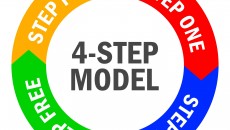Why measure leadership development?
Leadership development maturity is characterized by an organizational mindset of employees as corporate assets, with clearly defined future focused development processes and competencies.
A consistent level of involvement of business leaders to embrace the initiative and support in taking into account the organization’s leadership needs, makes it an integrated leadership development process.
However, research indicates that leadership development programs in almost half our organizations are at an ‘immature’ level on such a maturity continuum.
Rationally, leadership development is a necessary investment for any organization’s success, and research has shown a connection between investing in people and outcomes like productivity and employee turnover. However, organization leaders are now more committed to see the difference resulting from these investments.
Due to increased pressures for cost efficiencies, organizational leaders now wish to know the payoff of their investment in these initiatives to see value for money, and many organizations are stepping up to the challenge of showing the value of their programs and ROI levels.
ROI (Return on Investment): From intuition to rationale…
The return on investment is the amount of the improvement at the impact level attributed to the program, converted to money and compared to the cost of the program.
It is an ultimate measure of accountability that compares the actual cost of a program to its monetary benefits, using the same standard ratio that accountants have used for years, which most managers are familiar with.
Phillips ROI Methodology is a new addition to the leadership development manager’s measurement toolkit; which helps show a connection of the leadership development program to the bottom line, and works well in different types of environments including leadership development.
ROI Methodology has a variety of data assigned to different levels called the ‘Chain of Impact’, reflecting the successive effect of one on the next.
• Program Cost Data (Level 0): The fully loaded cost of the leadership development program, including all direct and indirect.
• Reaction Data (Level 1): An immediate reaction to the program from a variety of key stakeholders to gain insight into the value, importance, relevance, and usefulness of the program.
• Learning Data (Level 2): The changes in knowledge and skill acquisition and details what participants have learned to make the program successful.
• Application and Implementation Data: (Level 3): The extent of changes in behavior of how participants take actions, make adjustments, apply new skills, change habits, implement specific steps, and initiate processes as a result of the program, with details of barriers and enablers.
• Impact data (Level 4): An impact on the leader’s own work environment, directly on his or her team, or other parts of the organization, on measures such as output, quality, costs, time, job satisfaction and customer satisfaction.
• Return on Investment Data (Level 5): The monetary value of the business impact measures, isolated for the program, compared to the actual cost of the program.
• Intangible Data: The measures linked to the program that are not converted to monetary value.
As the evaluation moves to the higher levels, the value attributed to the data increases. Leadership development programs that evaluatedthe levels of business impact and ROI analysis should be chosen based on their life cycle, duration and cost, and their strategic value and visibility.
The ROI Methodology is a systematic approach for planning, capturing data, processing and analyzing data, and reporting results.
The approach involves four basic phases of activities:
• Evaluation planning: It involves developing objectives for all levels of data, linked to baseline data to provide the necessary focus and the direction. The objectives signify a conversion from the needs to evaluation at that same level. It also involves creation of plans (documents) for data collection, analysis and communication.
• Data collection; It involves collecting four levels of data, reaction and learning (L1-2). Data collected during the program, and application, implementation, and business impact (L3-4). Data after the program is executed (follow-up evaluation).
• Data analysis: It involves analyzing the collected data by isolating the effects of the program, converting that data to monetary values, calculating the fully-loaded program costs, calculating the ROI, and identifying intangible measures.
• Reporting: It involves determining the appropriate target audience, the appropriate level of information needed, the effective media for communication and the timing for sharing the results of the study.
The power to develop leaders fast and more cost-effectively has become a competitive advantage for today’s companies. Leadership development has become expensive and significant resources continue to be devoted to it. Top executives don’t want to rely on intuition and correlations.
They want to understand its value to compare results and pay-offs of their investments. ROI is the ultimate measure of monetary value of a program. And the ROI Methodology provides a systematic and credible process through which our leadership development managers can establish the ultimate value of their programs





